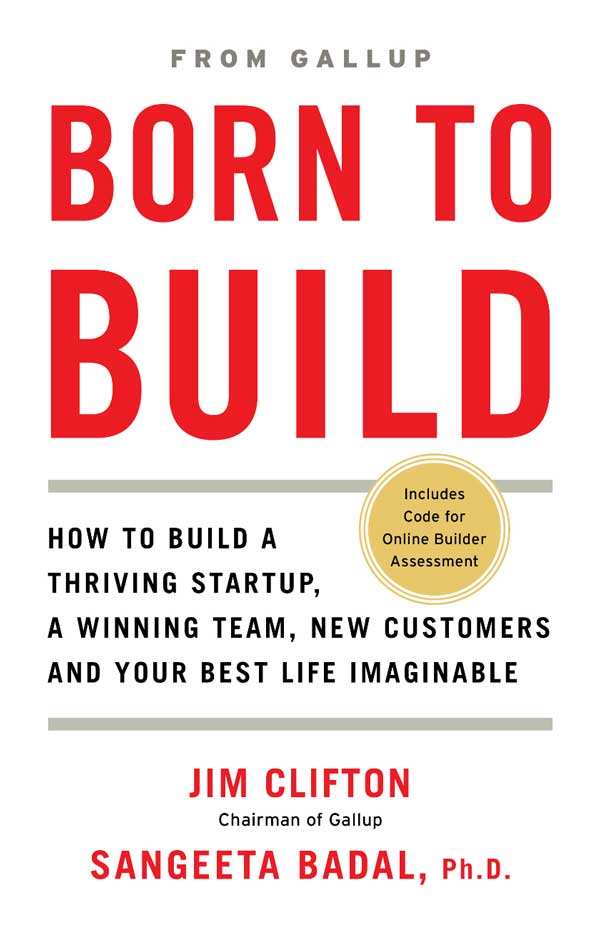Story Highlights
- Sustainable business growth remains elusive
- Innovations remain siloed in R&D divisions
- Organizations must develop their own entrepreneurs
Major corporations continue to face the challenge of sustaining business growth.
Despite all the talk from leaders about innovation and investment in developing new products and services or new lines of business, growth remains elusive. Reports indicate that the global corporate profit pool, which currently stands at almost 10% of world GDP, could shrink to less than 8% by 2025.
A big part of the growth problem is most corporate innovation initiatives, siloed in R&D divisions and idea labs or corporate accelerators, never reach customers. These initiatives are very good at generating ideas but weak in commercialization.
Why? Because companies are too focused on cultivating innovators within their businesses and not enough on developing those people who can commercialize innovative ideas.
Here's an important distinction: Innovators create, but builders commercialize.
The reality is, innovation has no value until an ambitious builder identifies an unmet market need; wins the competitive fight for corporate resources; navigates the rough waters of organizational politics; turns underdeveloped ideas into fleshed out business plans; and, most importantly, finds customers for the new products or services.
Rarely will you find an innovator who is also a driven builder, or a builder who is also an innovator. That's why it's critically important for organizations to identify and develop both.
The good news is, with the right training and development, every employee in your organization can upgrade their builder skills.
CEOs, your ticket to sustainable growth is entrepreneurialism, not just innovation.
In fact, I would go a step further and state that companies with a strong innovation agenda, but weak commercialization are worse off than those that are not innovative at all.
An organization that encourages entrepreneurial behavior in employees fosters a sense of personal initiative that leads employees to take risks, identify opportunities and initiate action before their competitors do.
On the other hand, in environments that are unsupportive of entrepreneurial behaviors, employees are less inclined to take the initiative and pursue opportunities even if they are naturally wired to do so.
In other words, an unsupportive culture can dampen or stifle your builders.
Below are ways you can identify and develop your builders and create a culture that fosters the entrepreneurial spirits that are essential to growth.
Yet without resources and formal support, new ideas rarely make it past the prototype or the demo stage. This frustrates builders and discourages talented employees from using their natural self-starting behaviors.
Build Your Way to Growth
Corporate entrepreneurialsm is a function of:
- management's commitment and action
- identifying and developing your builder potential at all levels of the organization
- creating a corporate culture that is conducive to fueling your builder talent
1. Management's commitment and action are key for corporate entrepreneurialism.
To paraphrase a well-known political slogan, "It's the manager, stupid!" The entire success or failure of your innovation efforts rests on the shoulders of your managers. They are the catalysts for change in the internal processes, culture and incentives that enable innovations to reach the customers.
A recent Gallup study of 190 managers found that only 3% had high builder talent. These managers consistently exhibit behaviors that ultimately result in new lines of business.
Managers with high builder talent have a higher probability of sifting and selecting, developing and shaping, and shepherding new ideas through the existing corporate processes so that the innovations have a chance to reach the customer. But rarely are managers or senior leaders selected for builder talent, nor are they trained in behavioral and organizational changes needed to bridge the gap between innovation and commercialization. In our experience, hiring for builder talent, then training managers and senior leaders on how to create pro-building organizational structures and processes will lead to the desired outcomes and business growth.
2. Maximize builder potential at all levels of the organization.
Most entrepreneurial action in organizations happens autonomously and informally at the employee level. Talented employees seize opportunities to develop new products or to improve existing processes all on their own, without any authority, resources or a formal process to get their innovations adopted into the parent organization.
Yet without resources and formal support, new ideas rarely make it past the prototype or the demo stage. This frustrates builders and discourages talented employees from using their natural self-starting behaviors.
This is where the role of managers, as described above, becomes critically important.
Rather than wait for such autonomous employee behaviors to bubble up and result in novel ideas, managers need to make identification and development of builder talent intentional. They have to identify who their builders are. Here are the signs to look for in employees:
- determination to plow through political structures
- ability to sell and influence others
- intuition to manage risks
- uncanny ability to form relationships with customers and suppliers
- intense intellectual curiosity about the product, service or industry in which they are working
- a clear focus on profitability
Identify who among your employee base are Rainmakers (people with sales talent and an ability to manage risks), Experts (innovators with a focus on product development), or Conductors (high management talent). Capitalize on their natural talents. Develop and position them in appropriate roles on teams. Strengths-based development of your builders and teams is key to increased entrepreneurial behaviors, which, in turn, lead to higher engagement, productivity and superior outcomes.
3. Create a culture that fosters entrepreneurial behaviors.
So far, we have focused on the role of managers and employees in driving entrepreneurial action. However, such action doesn't happen in a vacuum. The culture of your organization can either facilitate or hinder builder behavior.
The problem is that, although all organizations like to believe they have a culture that encourages new ideas and products, most are hardwired to do the exact opposite. Companies stifle their builder talent with their structure, practices and reward systems that are designed to support and grow the core business. Any initiative that has the potential to divert resources away from the core is rejected.
It is time to re-engineer your culture for growth.
Build a risk-tolerant culture. When an employee with a predisposition toward risk-taking works in an organization that is risk-tolerant, the employee is more likely to display behaviors that lead to opportunity-recognition, innovation and new product development. On the other hand, risk-averse organizations stifle employees' initiative to invent new solutions to problems or find new opportunities to commercialize.
A recent Gallup study found that only 18% of U.S. employees strongly agree they can take risks at work that could lead to important new products, services or solutions. When the remaining 82% of employees cannot take individual entrepreneurial action, it prevents companies from realizing the benefits of their innovation agenda.
Leaders: Tune your organizational practices and procedures toward driving entrepreneurial behaviors. Introduce organizational agility by reducing complex hierarchies, bureaucratic product approval procedures and red tape. Unless your company's systems are intentionally geared toward accommodating novel ideas, you will not see your employees going out on a limb to chase opportunities.
Re-engineer your performance management system. Entrepreneurial undertakings, by their very definition, have unknown outcomes. From problem definition to meeting customer needs, companies rarely have well-defined measures to track how well (or not well) ideas are moving from concept to customer.
Managers: Allocate appropriate resources -- time and money -- to support your builders. Allow your employees the flexibility of pursuing new and innovative projects. Then, hold them accountable. Design employee reward systems that accommodate failure, tolerate ambiguity and keep the focus on long-term outcomes.
Introduce a scientific method of building. Most organizations pursue their innovation agenda in an unplanned way with no clear process for bringing new ideas to market. There's a need to bring rigor to the entire process from identifying and developing talent to building a talent-based project team, to vetting and prioritization of ideas, to finding customers and integrating the new product into the mainstream business.
Clear lines of ownership for the ongoing development of the product, budget, and goals and timelines for each step will ensure that your organization can deliver new products to market efficiently and at scale.
Why Some Companies Grow and Others Remain Flat
The key to growth is entrepreneurialism. Every company wants it, but very few are actually structured in a way that allows the builder spirit to thrive. Growth requires innovators who create new products or solutions and builders who drive the process of selecting innovations generated through R&D and then commercializing the new knowledge.
Create a culture of building within your organization. Gallup can help you take innovation out of the lab and get it in front of your customers:
- Discover your unique builder talents.
- Get a step-by-step guide to successful building by ordering Gallup's new book, Born to Build.
- Learn how to coach entrepreneurs by taking Gallup's Coaching Builder Talents course.



